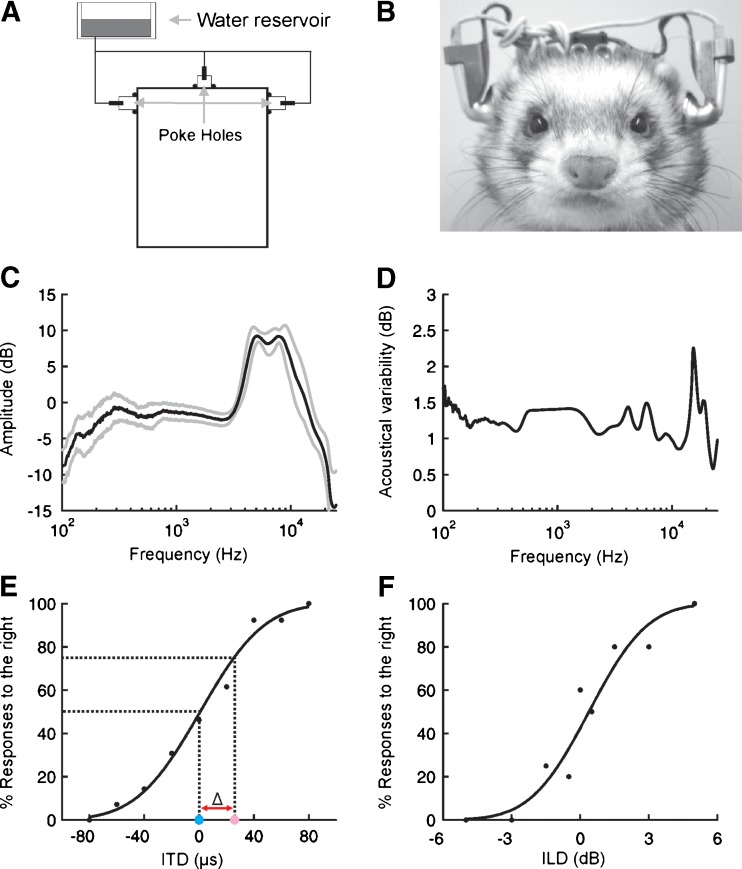FIG. 1.
Behavioral methods. A Schematic of setup used for behavioral testing. Each animal initiated a trial by poking its nose into a central poke-hole. A stimulus was then presented via head-mounted earphones and the animal registered its response via the poke-holes located on either side of the testing chamber. Correct responses were rewarded with a small amount of water. B Illustration of ferret wearing earphones. C Uncorrected transfer function (mean ± SD) of the earphone drivers used. D Variability (SD) in the amplitude spectrum of the same stimuli presented repeatedly after detaching and reattaching earphones. E Sample psychometric function for the ITD task obtained during a single session. Percentage of trials on which the animal responded at the right poke-hole is plotted as a function of ITD. Filled black circles show raw data, with the solid black line displaying the best fit line estimated using probit analysis. Threshold (Δ) was defined by calculating the difference (red line) between ITD values that elicited responses to the right on 50 % (blue circle) and 75 % (pink circle) of trials. F Sample psychometric function for the ILD task.

